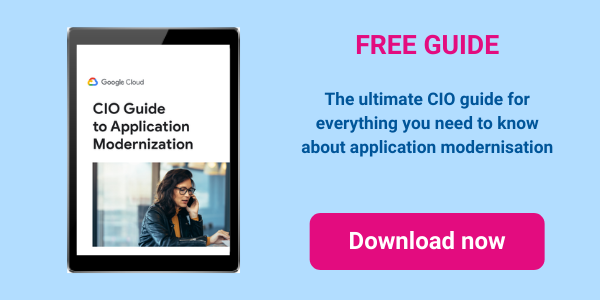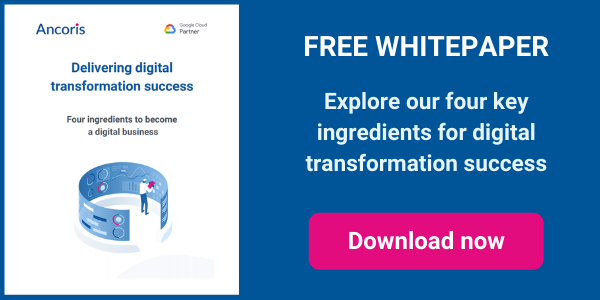More often that not, heritage IT systems prevent your organisation from becoming more agile. They hold you back from reinventing how you work in order to respond to competition or seize new opportunities. Modernising your applications is therefore key to achieving business goals. But a McKinsey study found that around 80% of organisations migrating applications to the cloud haven’t seen the expected business outcomes.
So what does it take to successfully modernise your applications — without disrupting critical business operations? Here are the six steps you should take:
1. Assess your portfolio
The first step is to inventory your current applications, identifying existing systems, their owners and how they’re being used.
2. Adopt a Business Services orientation
With modern, cloud-based digital technologies, IT can be delivered as a series of flexible services that are combined to support business capabilities such as order management, production scheduling or fulfilment. Some services handle specific tasks: order creation, order query or order update, for examples. Others provide cross-task services, such as user authentication and data management, that are used in multiple business processes.
One advantage of a business services approach is that you can change a single service without needing to change everything. Traditional legacy IT, however, typically provides these services as part of complex monolithic applications. The trick is to identify the different services being provided by each of these monolithic applications and use APIs to make each service available independently to the users or systems consuming that service. You can then modernise the services that lie behind each of the APIs one by one without disrupting the business capabilities your users rely on.
Another advantage — vital in a competitive and fast-moving world — is that you can quickly and easily combine existing services to create new applications that let you exploit new products, new revenue streams or new sales channels.
3. Develop your roadmap
Your next step is to plan how to migrate and modernise your existing services and applications, prioritising them based on factors like risk, usage, urgency and effort. For your initial migrations, you should choose business services with the least operational risk. That allows your team to get to grips with your new approach and new cloud platform — and work out the kinks in your migration process — with minimal impact on the business if you fail and need to rollback and try again.
As well as addressing business services, your roadmap should also cover the capabilities of your platform. Exploiting features like containerisation, serverless computing, API management and a DevOps or CI/CD approach can help your team get code into production more quickly and, at the same time, improve the stability and reliability of your applications. So your roadmap should lay out how and when you plan to adopt these capabilities. Again, you should identify low-risk services for your first efforts so your team can gain confidence in these new tools and procedures.
4. Create an effective process for modernisation
Traditional software delivery is typically based around projects that are scheduled around the resources and priorities of the IT department. Business needs and priorities are often ignored. A more successful approach is a Product Delivery Model, where teams own the entire lifecycle for software definition, delivery and support for each of your core capabilities. This allows you to create Business Capability Teams that are focused on meeting the needs and priorities of business stakeholders. Meanwhile, Platform Capability Teams can deliver cross-business capabilities such as data analytics and security.
5. Support your staff during and after modernisation
As should be clear by now, modernising your applications requires you to modernise your whole approach to delivering IT. That means you need to implement an ongoing change management programme to support not just end users and business stakeholders but also staff in the IT department itself as they switch to working in a new way.
6. Optimise your modernised applications for the long-term
With your applications transformed into business services running in the cloud, it's time to look at the options for optimisation. That might mean: reducing technical debt, so code runs more efficiently; replacing the legacy code delivering particular business services with cloud-native apps; automating more of your system management; or taking advantage of the latest technical advances, such as containerisation.
To help you navigate the complexities of application modernisation and cloud migration, consider working with an experienced Google Cloud Partner like Ancoris. Drawing on insights and expertise gained during numerous client projects, we can guide you through these six steps, helping you to:
- understand where you are and where you want to be
- develop a roadmap and choose the best products to meet your needs
- create the right teams, with the right processes — and the right support — to successfully deliver your application modernisation effort
- identify how to optimise your new application estate over the long term
If you’d like to find out more about how to move forward with application modernisation, why not download Google’s CIO Guide to Application Modernisation or come and talk to the experts in our Google Cloud Platform team.


